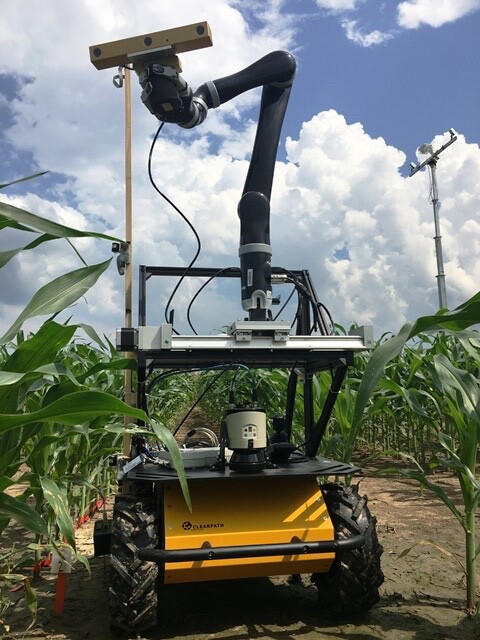If we're going to develop drought-resistant crops, we first need to better understand how existing crops respond to dry conditions. With that in mind, scientists from the University of Missouri have developed a field-deployed robotic system that studies parched corn plants.
The system was developed by a team led by Prof. Gui DeSouza, of the university's Vision-Guided and Intelligent Robotics (ViGIR) Laboratory.
It consists of two parts. One of those is a tower called the Vinoculer (ViGIR pheNOtyping trinoCUlar observER) which scans plants within a 60-ft (18-m) radius. When it identifies plants that appear to be under stress, it sends the second part of the system – an autonomous wheeled robot known as the Vinobot (ViGIR pheNOtyping roBOT) – to get a closer look.

The Vinobot has three sets of sensors along with a robotic arm, which it uses to create a 3D image of the plant, and to record data such as temperature, humidity and light intensity – it does so at three different heights on each corn stalk.
"This is called plant phenotyping, which assesses growth, development, yield and items such as tolerance and resistance to environmental stressors by correlating these to physiology and shape of the plants," says DeSouza.
The towers are said to be inexpensive, and can be easily moved to cover different parts of a field, summoning the robot as needed. According to DeSouza, this makes the system more economical than utilizing aerial vehicles such as drones, plus it can gather data 24 hours a day.
A paper on the research was recently published in the journal Sensors. The system can be seen in use, in the following video.
Source: University of Missouri





